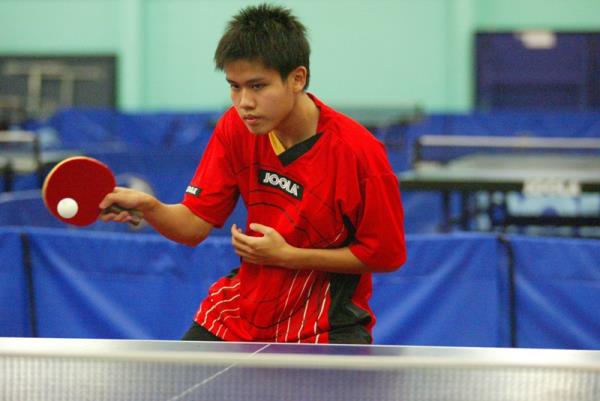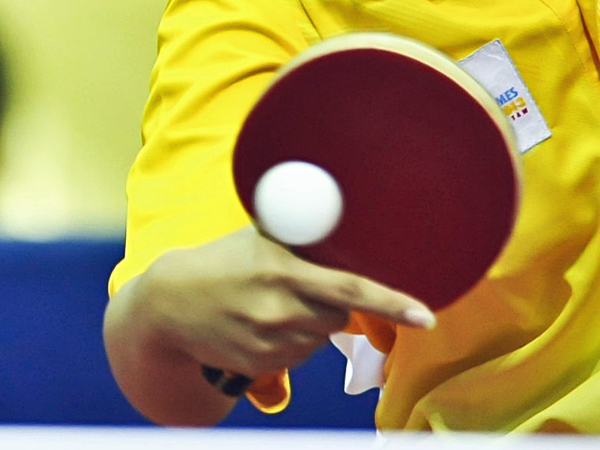How do you hold a table tennis racket?

File Photo Credit: SportSG
By Averlynn Lim
Click here to get tickets to the WTT Singapore Smash 2023, happening in Singapore from 11 to 19 March 2023
MASTER YOUR TABLE TENNIS TECHNIQUE (1): GET A GRIP
If you want to improve at any sport you play, it's important that you master the basic skills. Table tennis is no different – one of the most fundamental skills to pick up is how to grip your racket.
Although the International Table Tennis Federation has no restrictions on how you should handle your racket, two styles of grips have emerged over the years as the most optimal for playing. They are the Shakehand Grip and the Penhold Grip.
The Shakehand Grip
The Shakehand Grip is actually a family of different styles, each with very minor variations. It is possibly the oldest and most common grip in the sport, with virtually all Western players and roughly two thirds of Asian players using this grip.
File Photo Credit: SportSG
How Should I Hold The Racket?

The grip is akin to holding a regular tennis racket or shaking someone’s hand (hence the name).
You hold the handle in the palm of your hand and let the bat head fit snugly into a "V" shape formed by your thumb and first finger.
For better control, let your thumb and first finger lie roughly parallel with the straight edge of the rubber at the base of the racket head. The remaining three fingers should then be wrapped around the handle to provide stability.
Hold the handle firmly, but not tightly, imagining the bat to be extension of your hand and forearm.
This grip should remain constant during play.
Pros & Cons
[+] Natural and easy to master
[+] Provides more power in strokes (suited for attack-minded players)
[+] Allows for more control, both in forehand and backhand shots
[+] Wide selection of bats to choose from
[-] The “Crossover Point” – when it is difficult to determine whether to use a forehand or backhand return accurately
[-] Locked wrist can limit a player's adjustment to an opponent's strokes
The Penhold Grip
The Penhold Grip is also a family of styles, but they have greater variations from each other as compared to the Shakehand family.
The three most popular Penhold Grips are the Traditional Chinese Grip, the Reverse Penhold Backhand Chinese Grip, and the Japanese/Korean Grip.
File Photo Credit: SportSG
How Should I Hold The Racket?
In general however, the racket is handled as one would grip a pen, with the thumb and index finger, while the rest of the fingers are either curled or spread on the other side.
In the Traditional Chinese Grip, players hold a shortened handle, with the three remaining fingers resting against the other side. "Japanese" paddles have a raised handle, which is called a "hook." The index finger curls around the "hook" for extra leverage.
Penhold bats typically only have one side covered with a rubber sheet. This makes them lighter than Shakehand bats. The other side must still comply with the paddles rule, so it is usually painted red or black, or covered with a sheet of colour paper.
Pros & Cons
[+] Allows the wrist to move freely
[+] Quicker and more flexible returns (suited for fast-minded tactical players)
[+] No “Crossover Point” as the same side is almost always used to return all strokes
[+] The element of surprise, as most players are unfamiliar with the style
[-] Weak backhand
[-] Less power
Unusual Grips
While most players grip the racket in one of the two styles above, there are some unique grips, which have gained a small measure of popularity and success.
The Seemiller Grip
The Seemiller Grip, also known as the windshield wiper grip, was developed by former American champion Dan Seemiller in the 1970s.
The bat is held quite similarly to the Shakehand Grip, but adds a 90 degree turn so that the thumb and index are are used to grip the side of the bat.
The Seemiller grip allows good wrist movement on the forehand stroke, giving a powerful forehand topspin. It is also good for blocking on both sides.
Seemiller-grip players get tremendous snap on their forehand strokes, but have to hit backhand shots with the same side of the bat as the grip makes it awkward to hit shots using a traditional backhand.
The V Grip
The V Grip was developed in China, by forming a "V for victory" sign between the forefinger and middle finger. The other fingers rest under and on top of the handle, requiring a modified blade to grip successfully.
The V Grip produces more spin, power and leverage, but is less flexible especially when returning shots to a player’s elbow.

To receive the latest updates on the happenings in the Singapore sports scene, or to find out more about some of the latest programmes on offer at ActiveSG, like our Facebook page here.





![ActiveSG Academies and Clubs Logo (Solid Colour)[8647]](https://www.activesgcircle.gov.sg/hs-fs/hubfs/ActiveSG%20Circle%202023Theme/images/ActiveSG%20Academies%20and%20Clubs%20Logo%20(Solid%20Colour)%5B8647%5D.png?width=150&height=65&name=ActiveSG%20Academies%20and%20Clubs%20Logo%20(Solid%20Colour)%5B8647%5D.png)



-01.png?width=200&height=141&name=Team%20Singapore%20Logo%20(Red)-01.png)



